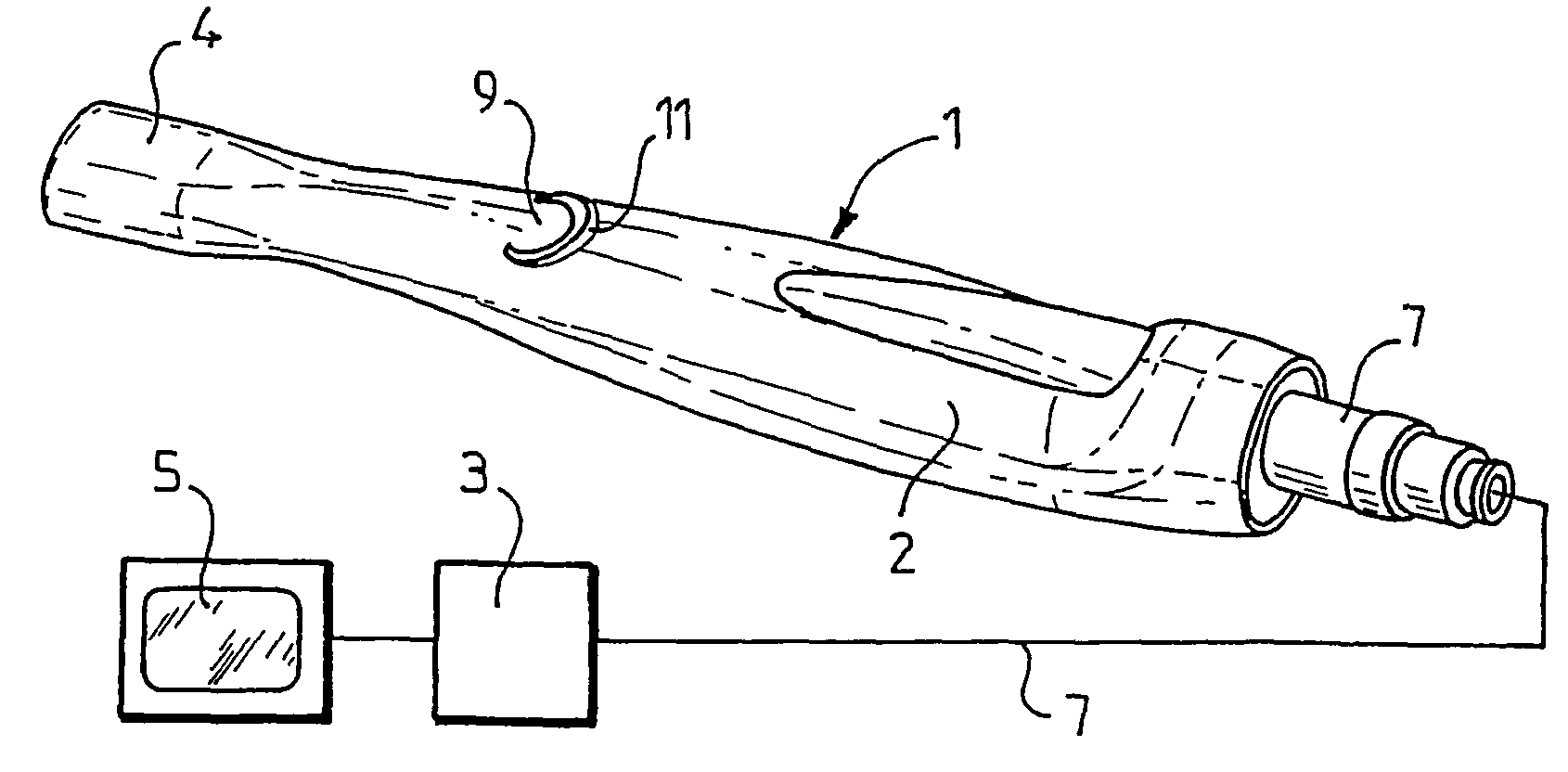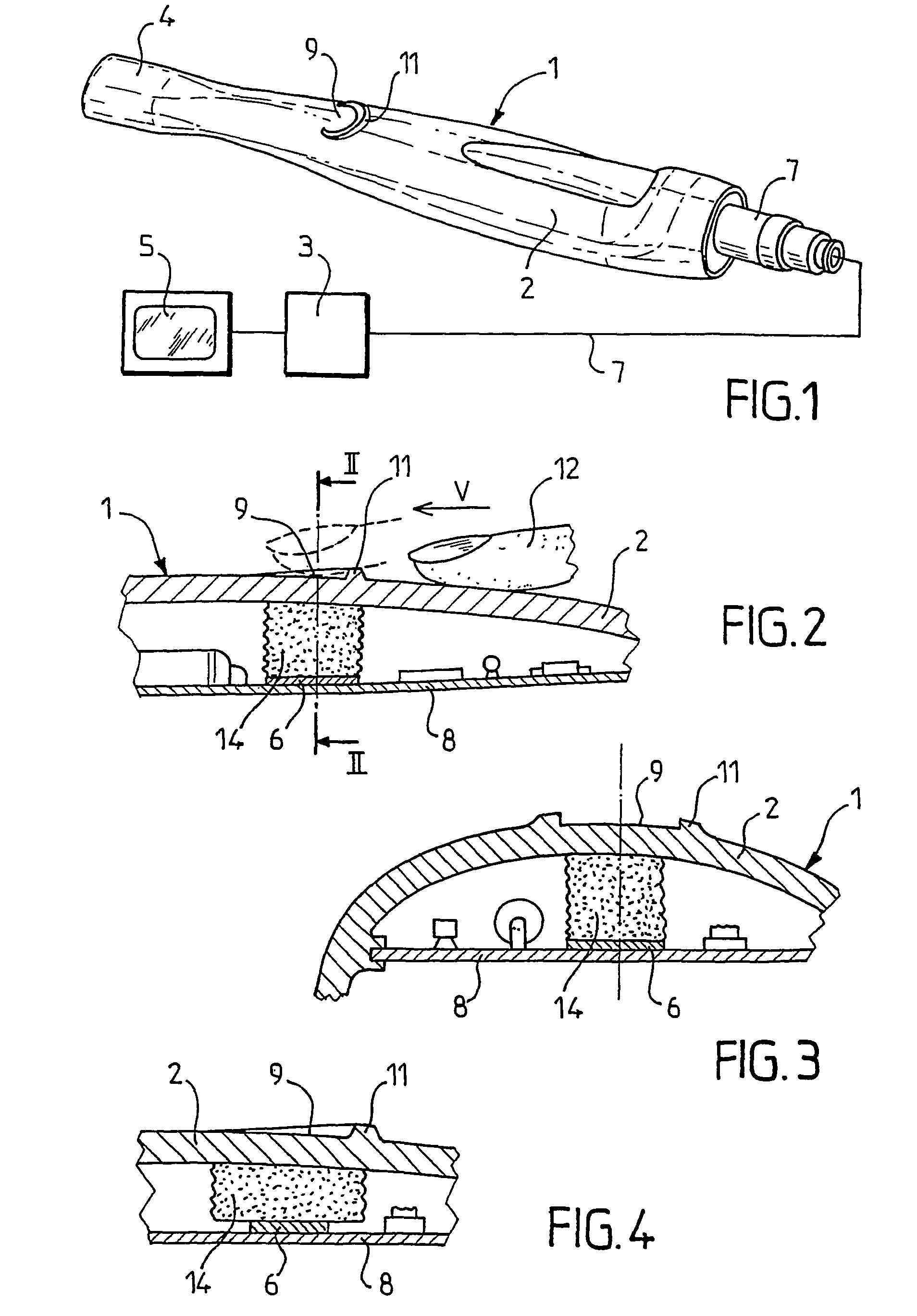Camera for medical, particularly dental use
a camera and dental technology, applied in the field of cameras for medical, can solve the problems of inability to localize sensitive controls, difficulty in ensuring accuracy, so as to preserve the quality of precision and repetitivity
- Summary
- Abstract
- Description
- Claims
- Application Information
AI Technical Summary
Benefits of technology
Problems solved by technology
Method used
Image
Examples
Embodiment Construction
[0019]FIGS. 1 to 3 show a dental camera 1 which is constituted by an elongated body 2, of substantially ellipsoidal cross section, comprising at its anterior end 4 a shot-taking lens and at its other end a cord 7 by which it is linked with electronic means 3 for supply and for managing the images which are displayed on a monitor 5.
[0020]According to the invention, this camera 1 comprises a control device allowing the user to “freeze” an image, i.e. to immobilize it on the monitor 5. This control device comprises a sensitive sensor associated with an electronic circuit, and a zone of surface discontinuity made on the casing 2.
[0021]The zone of surface discontinuity is formed by a boss 11 in the form of a C whose opening is oriented towards the anterior end 4 of the camera and which projects slightly with respect to the upper face of the body 2. The boss 11 is disposed upstream of a zone 9 (called detection zone 9) with respect to the movement of natural displacement of a finger 12 of...
PUM
 Login to View More
Login to View More Abstract
Description
Claims
Application Information
 Login to View More
Login to View More - R&D
- Intellectual Property
- Life Sciences
- Materials
- Tech Scout
- Unparalleled Data Quality
- Higher Quality Content
- 60% Fewer Hallucinations
Browse by: Latest US Patents, China's latest patents, Technical Efficacy Thesaurus, Application Domain, Technology Topic, Popular Technical Reports.
© 2025 PatSnap. All rights reserved.Legal|Privacy policy|Modern Slavery Act Transparency Statement|Sitemap|About US| Contact US: help@patsnap.com


